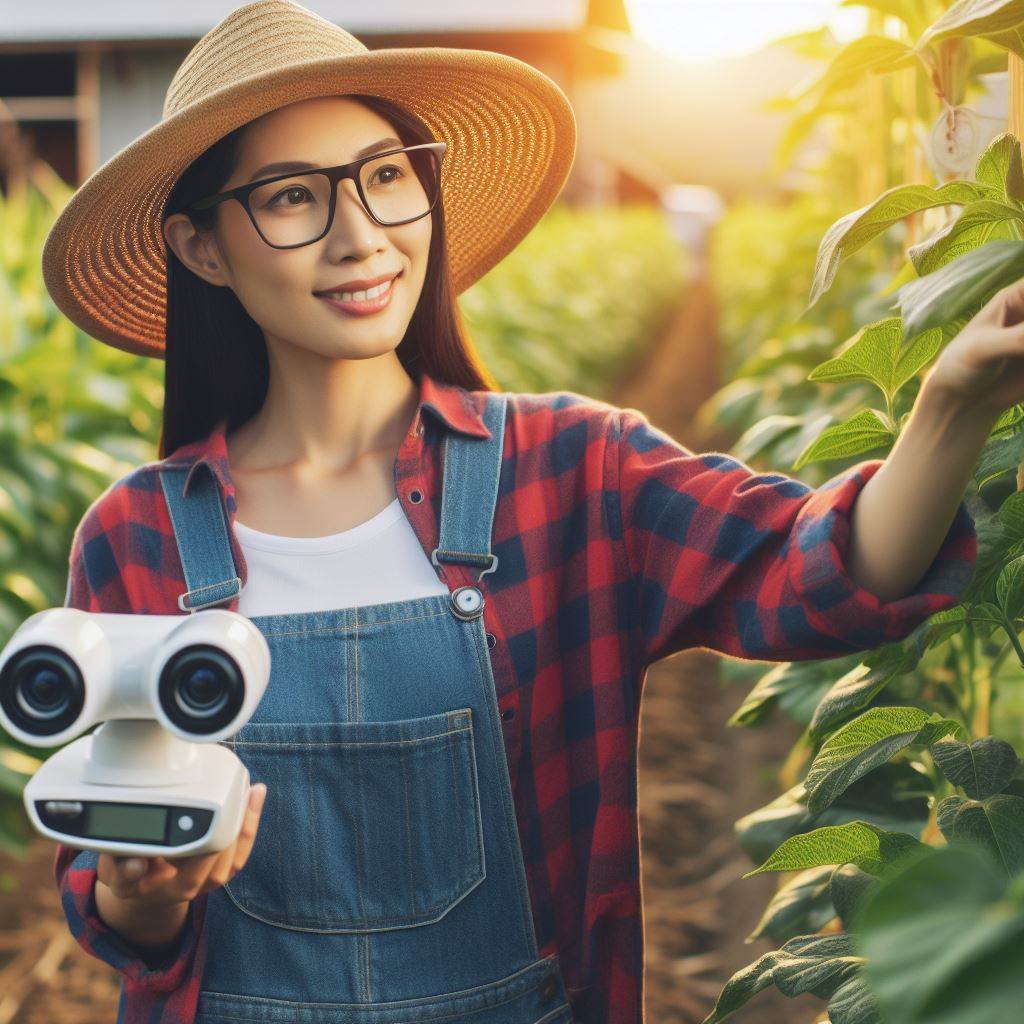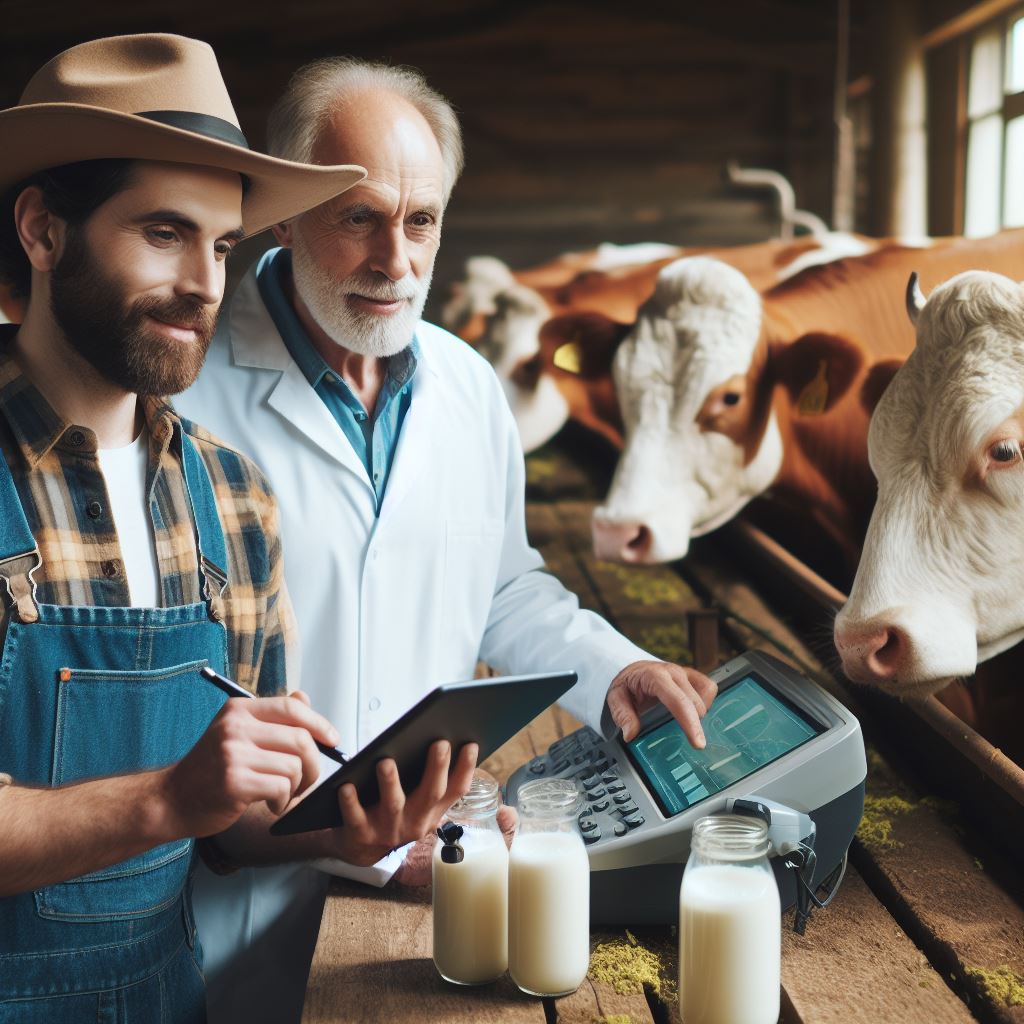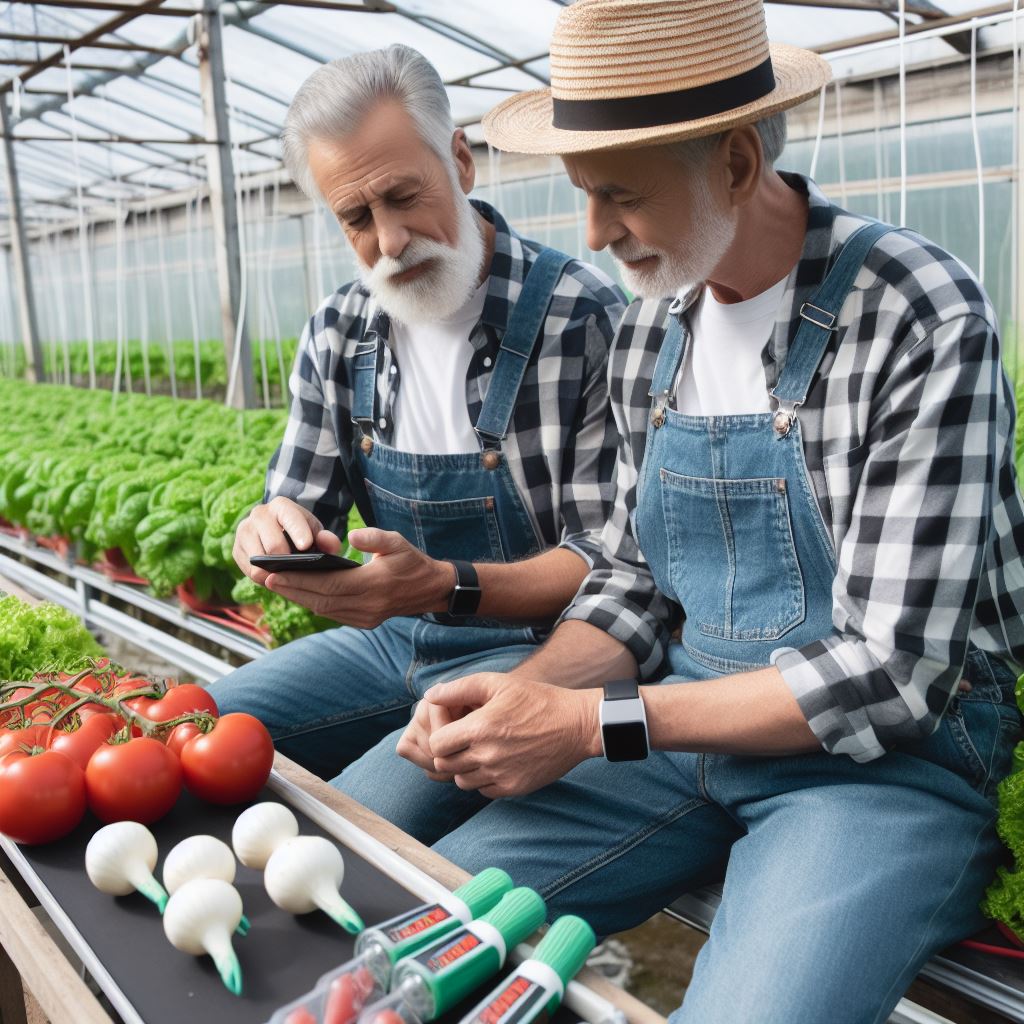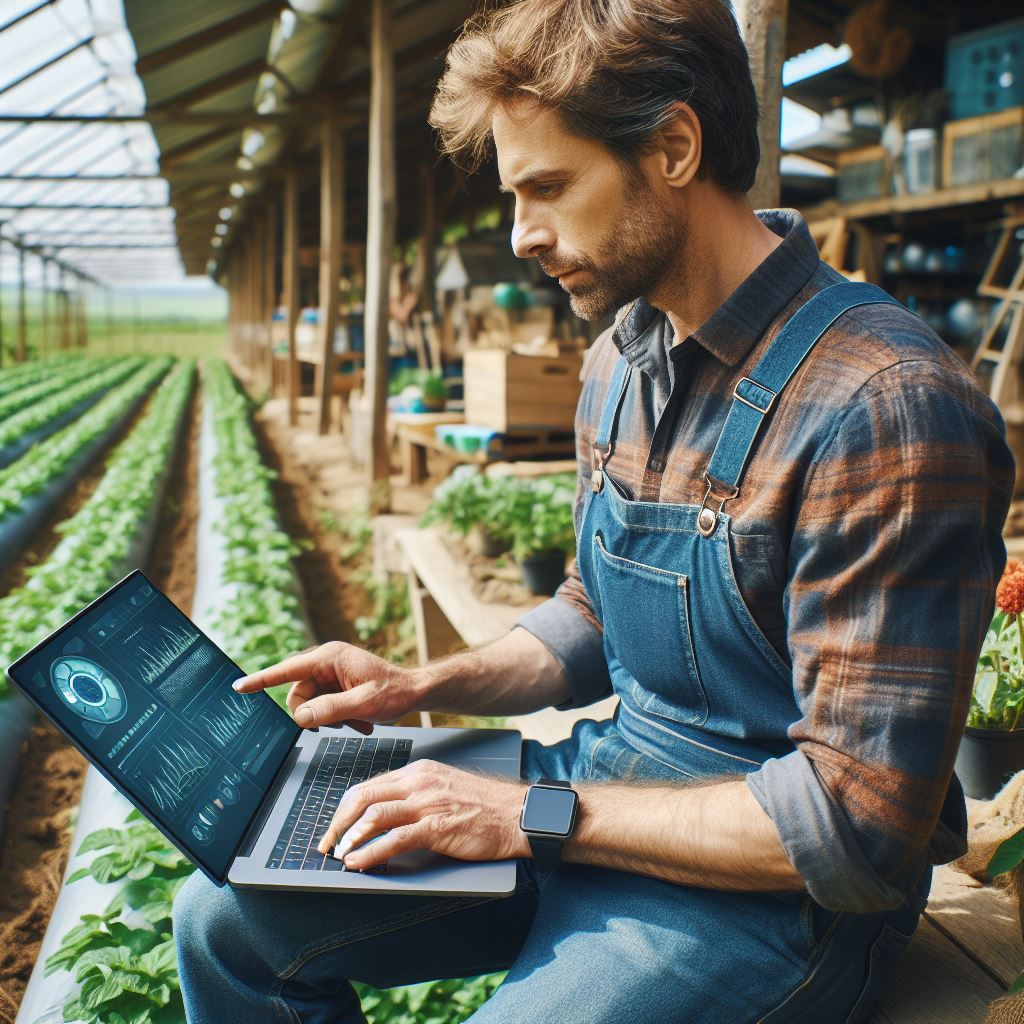Introduction
Hydroponics and aquaponics are innovative technologies that are revolutionizing modern agriculture.
Let’s explore their definitions and basic concepts, as well as their importance in the agricultural industry.
Definition and basic concept of hydroponics
Hydroponics is a cultivation method that involves growing plants without soil.
Instead, plants are placed in a nutrient-rich water solution, allowing them to absorb nutrients directly.
Aquaponics combines hydroponics and aquaculture, creating a sustainable ecosystem.
It involves growing plants without soil while also raising fish or other aquatic animals.
The waste produced by the animals provides nutrients to the plants, and the plants purify the water for the animals.
Benefits of hydroponics and aquaponics in modern agriculture
- Efficient use of resources: Hydroponics and aquaponics require less water and space compared to traditional farming methods.
- Year-round cultivation: These technologies enable farmers to grow crops regardless of season or climate, increasing overall productivity.
- Higher crop yields: With precise control over nutrients, water, and other environmental factors, hydroponics and aquaponics can result in higher crop yields.
- Reduced environmental impact: These technologies minimize the use of synthetic pesticides and fertilizers, reducing pollution and soil degradation.
- Healthier and fresher produce: By eliminating soil-borne diseases and pests, hydroponics and aquaponics produce cleaner and healthier crops.
Basically, hydroponics and aquaponics offer sustainable alternatives to traditional farming methods, ensuring a more efficient and environmentally friendly approach to agriculture.
Hydroponics: Technology insights
Types of hydroponic systems
- Nutrient film technique (NFT): Thin film of nutrient solution continuously flows over plant roots.
- Deep water culture (DWC): Plants are suspended in a nutrient-rich solution with their roots submerged.
- Drip irrigation system: Nutrient solution drips onto the plant roots through a network of tubes.
Benefits of hydroponics
- Water efficiency: Hydroponics uses up to 90% less water compared to traditional soil-based farming.
- Maximizing crop yields: Plants grow faster and produce higher yields due to controlled nutrient delivery.
- Prevention of soil-borne diseases: Eliminating soil reduces the risk of pests and diseases affecting the crops.
Key components of hydroponic systems
- Containers and growing media: Plants are grown in containers filled with inert materials like perlite or coconut coir.
- Nutrient solutions and pH regulation: Specific solutions are used to provide essential nutrients, which are continuously monitored and adjusted for optimal growth.
- Lighting and temperature control: Artificial lighting systems and temperature regulation are essential for providing adequate conditions for plant growth.
Challenges and limitations of hydroponics
- Initial setup costs: Hydroponic systems require investments in equipment, infrastructure, and nutrient solutions, making it initially expensive.
- Technical knowledge and expertise required: Proper understanding of plant physiology, nutrient management, and system maintenance is essential for successful hydroponics.
- Potential nutrient imbalance issues: Monitoring nutrient levels is crucial to avoid imbalances that can negatively impact plant growth.
Hydroponics is a modern agricultural technique that offers various advantages over traditional soil-based farming.
Let’s delve deeper into the technology insights of hydroponics.
Types of hydroponic systems
Hydroponics involves growing plants without soil and using a nutrient-rich solution to provide essential elements for plant growth.
There are different types of hydroponic systems, each with its own unique approach.
The Nutrient Film Technique (NFT) is a system where a thin film of nutrient solution continuously flows over the plant roots.
This allows for optimal nutrient absorption and oxygenation.
In Deep Water Culture (DWC), plants are suspended in a nutrient-rich solution with their roots submerged, ensuring constant nutrient availability.
Transform Your Agribusiness
Unlock your farm's potential with expert advice tailored to your needs. Get actionable steps that drive real results.
Get StartedAnother popular system is the Drip Irrigation System, where a controlled amount of nutrient solution is delivered directly to the plant roots through tubes.
Benefits of hydroponics
One of the significant benefits of hydroponics is water efficiency.
Compared to traditional farming methods, hydroponics uses up to 90% less water.
The nutrient solution is recirculated, reducing water waste and making it an environmentally friendly option.
Another advantage is the ability to maximize crop yields.
With precise control over nutrient delivery, plants grow faster and produce higher yields.
This is particularly beneficial in areas with limited arable land or unfavorable climate conditions.
Hydroponics also eliminates the risk of soil-borne diseases.
Pests and pathogens commonly found in soil are absent in hydroponic systems, reducing the need for pesticides and fungicides.
This ensures healthier plants and safer produce.
Key components of hydroponic systems
To set up a hydroponic system, certain key components are essential.
Containers and growing media, such as perlite or coconut coir, provide support for plants and allow roots to access the nutrient solution.
Nutrient solutions, carefully formulated to provide all necessary elements, must be regularly monitored and adjusted to maintain optimal pH levels.
Proper lighting and temperature control are critical for successful hydroponics.
Artificial lighting systems replicate sunlight, allowing plants to photosynthesize effectively.
Temperature regulation ensures optimal growth conditions, promoting healthier and faster plant development.
Challenges and limitations of hydroponics
Despite its advantages, hydroponics does come with challenges and limitations.
Initial setup costs can be high, including investments in equipment, infrastructure, and nutrient solutions.
However, these costs can be offset by long-term savings in water and reduced pesticide use.
Technical knowledge and expertise also play a vital role in hydroponic success.
Understanding plant physiology, nutrient management, and system maintenance is crucial for optimal results.
Regular monitoring and adjustments are necessary to prevent nutrient imbalances that could hinder plant growth.
Essentially hydroponics offers numerous technological insights that revolutionize modern agriculture.
Its various systems provide flexibility and efficiency, allowing for maximum yields with minimal resource consumption.
Showcase Your Farming Business
Publish your professional farming services profile on our blog for a one-time fee of $200 and reach a dedicated audience of farmers and agribusiness owners.
Publish Your ProfileBy overcoming the challenges and limitations through knowledge and expertise, hydroponics can significantly contribute to sustainable and highly productive farming practices.
Read: Hydroponics 101: Basics & Benefits
Aquaponics: Technology insights
Combination of aquaculture and hydroponics
Aquaponics is an innovative agricultural practice that combines aquaculture and hydroponics.
It is a sustainable and environmentally friendly system that offers several advantages over traditional farming methods.
Components of an aquaponic system
In an aquaponic system, the combination of fish tanks, grow beds, and beneficial bacteria creates a mutually beneficial ecosystem.
Fish waste provides nutrients for the plants, and the plants help filter and clean the water for the fish.
Advantages of aquaponics
One of the primary advantages of aquaponics is its sustainability.
The system uses less water compared to traditional farming methods because the water is continuously recycled.
Additionally, no chemical fertilizers are needed as the fish waste serves as a natural fertilizer for the plants.
Another significant advantage is the simultaneous production of fish and vegetables.
Aquaponics allows farmers to cultivate both aquatic animals and various vegetables in one system.
This integrated method maximizes space utilization and increases overall productivity.
Furthermore, aquaponics reduces water consumption.
Unlike traditional farming, which requires constant irrigation, aquaponics only needs water to compensate for evaporation loss.
The water-efficient nature of aquaponics minimizes water waste and contributes to water conservation efforts.
Maintenance and management of an aquaponic system
Maintenance and management of an aquaponic system are essential for its success.
Regularly monitoring water quality is crucial to maintain a healthy and balanced ecosystem.
pH levels, ammonia, and nitrate levels should be regularly tested to ensure optimal conditions for fish and plant growth.
Proper feeding and health management of fish are also essential.
Fish should be provided with a well-balanced diet to promote their growth and prevent diseases.
Regular health checks and prompt treatment for any issues are necessary to maintain a thriving fish population.
In terms of plant maintenance, regular harvesting of mature plants is necessary.
This promotes continuous growth and allows space for new plants to flourish.
Additionally, maintaining proper nutrient levels is crucial for optimal plant health and growth.
Monitoring the nutrient levels in the water and adjusting as needed is part of effective system management.
In general, aquaponics combines aquaculture and hydroponics to create a sustainable and efficient farming system.
The benefits of aquaponics include environmental friendliness, simultaneous production of fish and vegetables, and reduced water consumption.
Proper maintenance and management of the system are essential for its success in providing a reliable source of fresh fish and vegetables.
Read: Hydroponics: Future of Sustainable Farming?
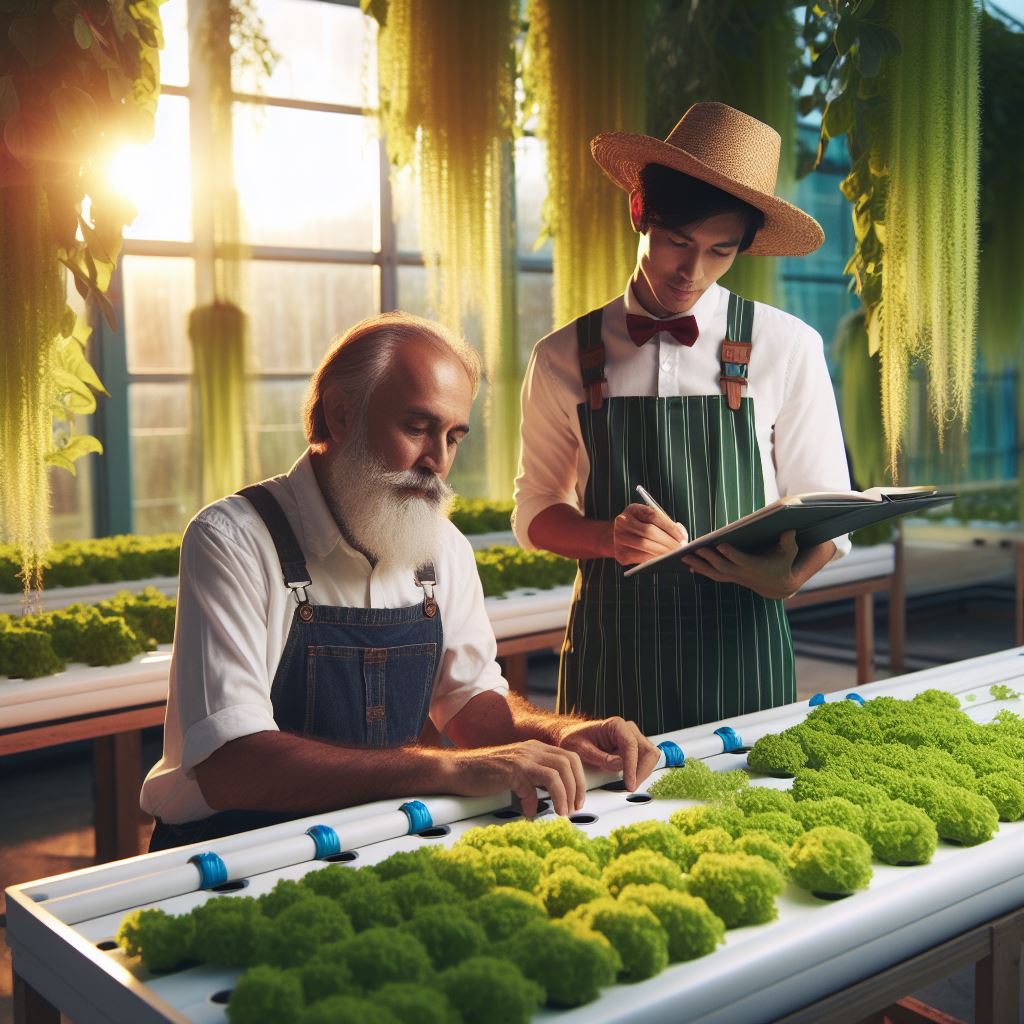
Comparison between Hydroponics and Aquaponics
Similarities and differences in technology
- Both hydroponics and aquaponics are soil-less cultivation methods utilizing water as the primary medium.
- Hydroponics relies on nutrient-rich water solutions that are directly supplied to the plant roots.
- Aquaponics integrates the cultivation of plants with aquatic animals, utilizing their waste as nutrients for the plants.
- While hydroponics requires the addition of artificial nutrients, aquaponics uses a natural ecosystem with fish waste providing the necessary nutrients.
- Hydroponics systems are generally easier to set up and maintain compared to aquaponics systems.
- Aquaponics, on the other hand, creates a symbiotic relationship between plants and fish, leading to a more sustainable and self-regulating system.
Cost-effectiveness and scalability
- Hydroponics systems are often more cost-effective initially, as they require less infrastructure and equipment.
- Aquaponics systems, while more expensive to set up, have the advantage of being more sustainable and cost-efficient in the long run.
- Hydroponics can be easily scaled up or down, making it suitable for both small-scale home gardens and large commercial operations.
- Aquaponics systems, due to the need for fish tanks and biological filters, may be harder to scale up and are more commonly used in larger-scale operations.
Suitability for different types of crops and settings
- Hydroponics is versatile and can be used to grow a wide variety of plants, including leafy greens, herbs, and fruits.
- Aquaponics is particularly suitable for plants that thrive in nutrient-rich environments, such as leafy greens, tomatoes, and cucumbers.
- Hydroponics can be implemented in various settings, including greenhouses, indoor spaces, and even vertical farming systems.
- Aquaponics systems, due to the integration of fish, are more commonly used in larger outdoor setups or commercial farms.
- The choice between hydroponics and aquaponics depends on the specific crop requirements, available space, and the desired level of sustainability.
In essence, both hydroponics and aquaponics offer unique advantages and can be effective methods of soil-less cultivation.
Hydroponics provides an easier setup, maintenance, and scalability, making it suitable for a range of crops and settings.
On the other hand, aquaponics creates a sustainable ecosystem by integrating plant cultivation with aquatic animals, making it more environmentally-friendly in the long run.
The cost-effectiveness of hydroponics is initially higher, while aquaponics may require a larger investment upfront.
Ultimately, the choice between these two methods will depend on individual preferences, crop requirements, and the available resources.
Read: Hydroponics: Future of Urban Farming?
Find Out More: Harvest Tech: Robotic Arms in Use
Future prospects and potential advancements
Research and development in hydroponics and aquaponics:
- Scientists and experts continue to invest in research and development to improve hydroponic and aquaponic systems.
- Ongoing research aims to optimize nutrient delivery, enhance plant growth, and increase crop yields.
- New techniques and technologies are being explored to overcome the limitations and challenges of these systems.
- Research is focused on developing cost-effective and sustainable methods for widespread adoption.
- Collaborations between universities, governments, and agricultural organizations are fostering innovation and knowledge-sharing.
Integration of automation and artificial intelligence in systems
- The integration of automation and artificial intelligence has the potential to revolutionize hydroponic and aquaponic systems.
- Automated sensors and monitoring systems can efficiently regulate pH levels, nutrients, and water quality.
- Artificial intelligence can analyze data and make real-time adjustments to optimize plant growth.
- Automation reduces labor costs, improves efficiency, and minimizes human error within these intricate systems.
- Combining automation and AI allows for remote and centralized monitoring and control of multiple growing systems.
New crops and adaptations for different climates
- Hydroponics and aquaponics offer the flexibility to grow a wide variety of crops in various climatic conditions.
- Researchers are exploring the potential of cultivating unconventional crops, such as medicinal herbs and exotic fruits.
- Efforts are being made to adapt hydroponic and aquaponic systems to extreme climates and regions with limited resources.
- These innovations open up opportunities for year-round crop production and reduce reliance on traditional agriculture.
- Global food security can be enhanced by growing region-specific crops that are not suitable for conventional farming.
Future prospects of hydroponics and aquaponics
As research and development efforts continue to expand, the future prospects of hydroponics and aquaponics look promising.
The integration of automation and artificial intelligence in these systems enables precise monitoring and control, ultimately maximizing crop yields while minimizing resource consumption.
Furthermore, the exploration of new crops and adaptations for a variety of climates offers a solution to food scarcity and promotes agricultural diversity.
Hydroponics and aquaponics present a more sustainable and efficient alternative to traditional farming, addressing concerns about land use, water consumption, and chemicals in food production.
Showcase Your Farming Business
Publish your professional farming services profile on our blog for a one-time fee of $200 and reach a dedicated audience of farmers and agribusiness owners.
Publish Your ProfileCollaborations between scientists, governments, and agricultural organizations are crucial for advancing these technologies.
Sharing knowledge, expertise, and resources will accelerate innovation and drive the widespread adoption of hydroponics and aquaponics.
In a nutshell, the future of hydroponics and aquaponics lies in unlocking their full potential through continuous research, technological advancements, and adaptation to the evolving needs of our planet.
These systems have the capacity to revolutionize modern agriculture and provide sustainable solutions for feeding the growing global population.
Read: Hydroponics: Future of Urban Crop Production
Conclusion
Solar power represents an immense renewable energy source with untapped potential for agriculture.
Solar panels convert sunlight into electricity through photovoltaic cells.
This harnesses the abundant, free rays from the sun to generate clean energy.
As concerns mount around fossil fuel dependence and climate change, solar offers a sustainable solution.
Agricultural operations require considerable energy across machinery, lighting, heating and more.
Solar power can sustainably meet modern farming’s electricity needs.
By installing solar infrastructure, farms can slash their greenhouse gas emissions and utility bills.
This technology presents a win-win opportunity to cut costs and environmental impact.
This article will focus on solar power applications tailored to agriculture’s unique needs.
Topics covered include solar-powered irrigation, farm equipment, livestock operations, and more.
With smart integration, solar energy can run farms of the future.
The technology is here and costs are falling steadily.
By tapping into the sun, growers can insulate themselves from volatile fuel prices and play a key role in the renewable energy transition.
The time is now for farming’s solar revolution.

